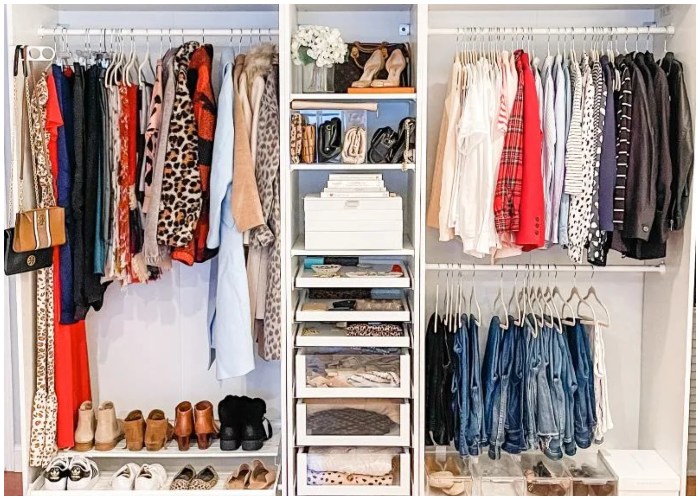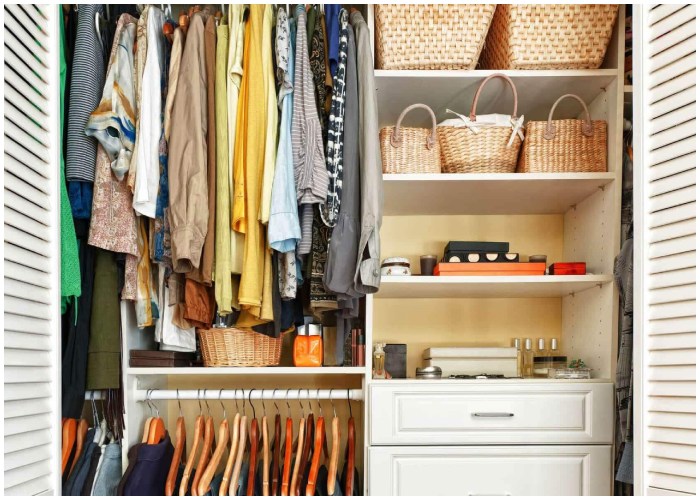A well-organized closet not only enhances the visual appeal of your space but also streamlines your daily routine by allowing for easy access to your clothing. When combined with strategic shopping timing, you can revamp your wardrobe without overspending. This article provides useful tips for organizing your closet effectively, as well as guidance on the ideal times to shop for clothing, ensuring that you make the most of your purchases.
Step 1: Clear Out and Assess Your Wardrobe
Start Fresh
The first step to organizing your closet is to take everything out. Emptying the space allows you to see what you own and makes it easier to clean the shelves and drawers.
Sort Your Clothes
As you remove each item, categorize them into three piles:
- Keep: Clothes that fit well, you love, and wear regularly.
- Donate/Sell: Items that are in good condition but no longer suit your style or fit.
- Trash: Worn-out items that cannot be salvaged.
This sorting process helps you assess what you actually wear and makes it easier to declutter your wardrobe.

Step 2: Clean and Prepare Your Closet
Dust and Clean
Before returning clothes to the closet, take the time to dust shelves, vacuum or sweep the floor, and wipe down surfaces. A clean closet creates a fresh start and makes your organized space feel more inviting.
Use Organizers
Invest in storage solutions that help maintain order. Consider:
- Hangers: Use matching hangers for a uniform look.
- Bins and Baskets: Store accessories, shoes, and seasonal items.
- Drawer Dividers: Keep smaller items like socks and underwear organized.
Step 3: Arrange Your Clothes Effectively
Organize by Category
Organizing your clothes by category can make it easier to find what you’re looking for. Consider grouping items into sections such as:
- Tops
- Bottoms
- Dresses
- Outerwear
- Shoes
Color-Coding
For a visually pleasing effect, arrange items within each category by color. This not only looks aesthetically appealing but also helps you quickly locate specific items.
Seasonal Rotation
If space allows, rotate your wardrobe seasonally. Keep current season clothes front and center and store out-of-season items in bins or the back of the closet. This makes it easier to access what you need without sifting through everything.

Step 4: The Best Time to Shop for Clothes
Once your closet is organized, it’s time to consider when to shop for new items. Knowing the right times to shop can help you get the best deals.
End of Season Sales
Retailers often discount items significantly at the end of each season. Shopping for winter clothes in late winter or early spring can lead to substantial savings. Similarly, look for deals on summer apparel as fall approaches.
Major Shopping Events
Take advantage of major shopping events, such as:
- Black Friday: A great time for electronics and winter clothing.
- Cyber Monday: Ideal for online deals on a variety of items.
- Labor Day Sales: Perfect for summer gear and home goods.
Holiday Sales
Many retailers offer substantial discounts around holidays. From Memorial Day to Fourth of July, these sales can be a goldmine for finding new clothes at lower prices.
Back-to-School Season
Late summer is not just for students; it’s also a fantastic time for adults to shop for clothing. Many stores provide discounts on all sorts of apparel, making it a smart time to refresh your wardrobe.
Step 5: Maintain Your Organized Closet
Regular Check-Ins
Set a reminder every season to reassess your closet. This practice ensures that you’re regularly decluttering and keeping only the items you love and wear.
Stay Disciplined
As you shop, remember to stick to your plan. Avoid impulsive purchases by asking yourself if the item fits well with your existing wardrobe and if you truly need it.
Create a Wishlist
Instead of purchasing on a whim, create a wishlist of items you genuinely need. This approach can help you avoid clutter and keep your wardrobe focused and functional.
Conclusion
Organizing your closet and shopping at the right times can significantly enhance your wardrobe management and shopping experience. By following these steps, you’ll not only create a more functional space but also make smarter shopping decisions that save you money. With a little effort and awareness, you can enjoy an organized closet and a wardrobe that reflects your style while being economical. Happy organizing!